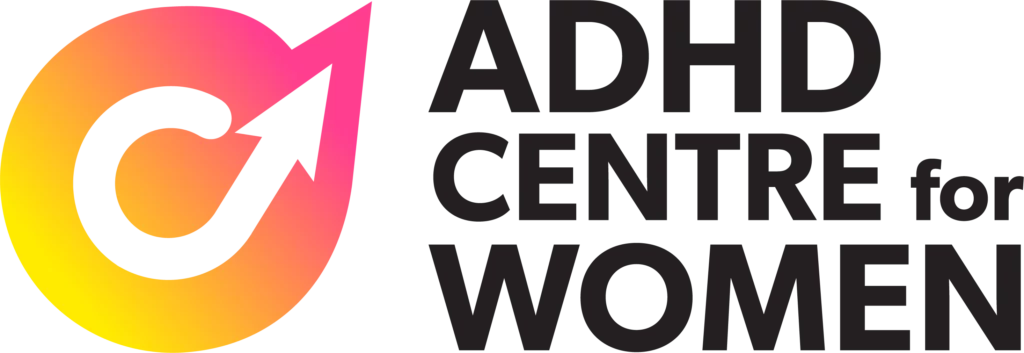ADHD Overview

Attention-Deficit Hyperactivity Disorder is a neurodevelopmental disorder that affects about 5-7% of adults. As an adult, ADHD is often revealed during major life events such as: Starting post-secondary Career advancement Changes to family dynamics (beginning or separating a family) Menopause Retirement These are a few of life events which may uncover your ADHD. It is important to note that ADHD is not an intellectual disorder; you can have ADHD, a high IQ and still be negatively impacted by ADHD. The underlying symptoms of ADHD are the same, however, the impairments present differently in everyday life from person to person. Adults with ADHD can experience academic failure, occupational difficulties, numerous job changes, relationship problems, financial difficulties, and substance use. In most adults, ADHD is often accompanied by a co-existing condition such as anxiety or depression. Some other ways ADHD might show up in a person’s life: Having difficulty with focus during conversations; my mind is elsewhere Feeling like you are not working to your potential or underachieving Working significantly harder than your peers to achieve the same results Feeling frustrated and impatient, having emotional outbursts Not being able to finish reading an article or book Being easily distracted by the sights and sounds in the environment Over or under estimating time required to complete tasks Hyper-focusing on a task while ignoring surroundings Procrastinating or delaying the start of important tasks Impulsive spending, eating, drinking, or sexual activity Frequent driving accidents or traffic tickets Poor organization Forgetful in daily activities Consistently loses or misplaces things such as keys, wallet or glasses ADHD is highly heritable and if one family member has ADHD, it is likely that another member also has ADHD. The exact cause of ADHD is still unknown; we do know that there are differences in the brains of people who have ADHD compared to those who do not. The ADHD Brain is different than the non-ADHD Brain A Pet Scan illustrating difference between a brain with ADHD and one without. PHOTO: NEUROSCIENCENEWS What is different in the ADHD brain? The ADHD brain structure is different:It is smaller, has less volume in some brain regions, and has less cortical thicknessThe ADHD brain functions differently:Less activation of networks needed for executive function and attention. Excessive activation of networks causing hyperactivity and impulsivity.The ADHD brain has problems with some pathways: The neurotransmitters dopamine and norepinephrine; brain pathways are not working well. The Adult ADHD Self-Report Scale (ASRS-v1.1) Symptom Checklist is a tool that healthcare providers may use to screen for Adult ADHD. This is not a diagnostic tool but a screener to indicate if a further detailed assessment is necessary. Although we do not use this screener at our Centre, you may download a free Adult ADHD Self-Report scale below. Download ASRS
Work And School Strategies

Strategies to Succeed at Work Adults with ADHD often self-select careers using the advantageous traits of their ADHD to succeed, however, often at least one of their ADHD traits will negatively impact an aspect of the job or with colleague/supervisor interpersonal relationships. It is important to be aware of the areas of ADHD that impact your work to develop better ways to support yourself for success.
Schedule and Routines

Schedules and Routines ADHD often involves difficulties with organization, time management, and maintaining focus. Structured schedules and routines can mitigate these challenges by providing a predictable framework within which to operate. Consider implementing routines for tasks such as:– Eating/meals,– Exercise,– Sleeping,– Appointments,– Medication– Social events.
Gadgets and Tools

Use Gadgets and Tools to Manage Your ADHD There are a lot of ADHD management tools that are marked for adults. It is important to select and trial supports that may help you. When selecting a gadget or tool, consider your challenge areas and look for something affordable and easy to use. Trial your selection and if it does not work, identify why and re-adjust by selecting another support that will be better suited. Some examples of tools and gadgets are:– To-Do lists/planners– Apps for phones and tablets– Spreadsheets– Whiteboards– Digital recorders– Calendar reminders for appointments– Program routines and schedules into cellular phones
Healthy Living

Exercise, Sleep and Meditation Exercise Not only is regular exercise good for physical health but it is helpful for mood, anxiety and focus Try to fit regular exercise into your weekly routine At work, stand more and sit less Implement exercise routines with a trainer or by attending an exercise class Use metrics to monitor your health and exercise success by: Measuring daily weight Counting steps or distance walked Using a watch to monitor heart rate, activity and sleep Sleep People with ADHD can have difficulty falling asleep and staying asleep Treatment of ADHD often leads to improved sleep Practice good sleep hygiene: Follow a consistent sleep schedule including going to sleep and waking up at the same time daily Ensure the bedroom is quiet, dark and with the correct room temperature Avoid overstimulation before sleep time, such as television, video games and online chatting Avoid caffeine products in the afternoon and evening Meditation, Yoga and Breathing Exercises Many people find that meditation, yoga, and breathing exercises help with focus and anxiety Meditation and yoga classes can be attended in studios but also be done at home with videos and apps Try to schedule these wellness breaks into your daily routine
Substance Use

ADHD and Substance Use Alcohol and cannabis can interfere with the effectiveness of ADHD stimulant medication.Coffee, tea, energy drinks and other caffeine products can lead to “overstimulation” if taken with ADHD stimulant medication. Remember to discuss the use of all recreational substances and over-the-counter medications with your physician/nurse practitioner
ADHD Medication

ADHD Medication First Line ADHD Treatments ADHD & ADD medication is an important part of ADHD management strategy along with the non-medicine strategies. ADHD medication has been around for more than fifty years and there are many published research papers on their safety and efficacy. First-line treatment guidelines for ADHD and ADD medication are stimulant medication either a Methylphenidate or Amphetamine product. There are many different options within these two categories. ADHD stimulants work by blocking the reuptake of norepinephrine and dopamine within the brain. While Amphetamine also promotes the release of norepinephrine and dopamine. Canadian Stimulant Options The medication, doses and possible side effects listed here are for educational purposes only. You should talk to your healthcare provider about the medication options available, their benefit and possible side effects. Medication should only be started/changed/adjusted by a patient’s physician or nurse practitioner. Methylphenidate (Ritalin) Based Amphetamine (Dexedrine) Based Possible Medication Side Effects Medication management is usually effective with minimal side effects, some side effects may go away in time. It is always important to discuss with your doctor the benefits and side effects when starting any medication. Palpitations Increased heart rate Irregular heart rhythm Increased blood pressure Sleep disturbance Decreased appetite Increased anxiety/ irritability Headache Dry mouth Chest pain Rashes ADHD Medications Usually Help to Please see CADDRA guide to ADHD pharmacological treatments in Canada – updated October 2024. Click here


